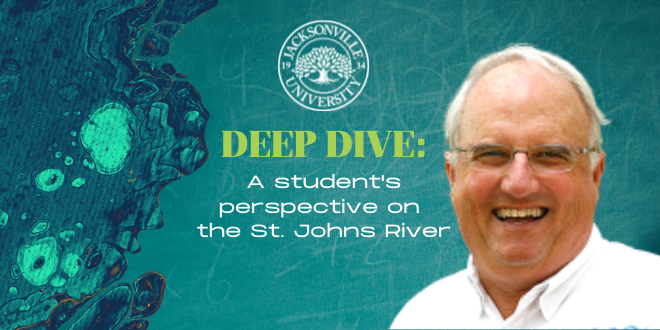This past semester we offered a course at Jacksonville University entitled “Ecology of the St. Johns River.” It was mentioned in last month’s column. As part of their final exam, I had them review some past River Life columns and write one. Several were quite good. Here is the column written by Luke Stoeber who is a senior marine science major from Ohio. Luke has an outstanding academic record with a very bright future. He is looking forward to graduate school focusing on benthic ecology.
Here is what Luke wrote: “Just last weekend I found myself stomping through high grasses and sinking in mud as I wandered through a saltmarsh off Heckscher Drive to go fishing. Along my walk, I noticed fiddler crabs peeping in and out of their burrows and marsh periwinkles moving slowly through the mud. While I fished, because I wasn’t catching much, as usual, I got to look around and take in the wetland system and began to appreciate how important these often looked-over areas really are.
Wetlands along the St. Johns River come in many different forms other than the coastal saltmarshes I often visit. Further upstream, they may take the shape of cypress swamps or patches of vegetation bordering the river. While they may not look like much, these systems are vital to the health of the St. Johns River and can prove to be beneficial to those who live near the river as well.
Wetlands provide what are now termed “ecosystem services” to communities living on or near the St. Johns River. Ecosystem services mean that these wetland ecosystems provide a service to the community that would otherwise have to be dealt with through construction and mitigation projects. One example of an ecosystem service that wetlands provide is flood protection. Wetlands act like natural sponges that can absorb large quantities of water. When heavy rains or storm surges cause the water level in the river to rise, coastal wetlands are the first line of defense for major flooding events. Their porous soil and dense vegetation can absorb water, preventing it from flooding roads and people’s homes.
Aside from flood protection, wetlands provide an ecosystem service in the form of nutrient filtration. Nutrients, often provided in the form of lawn fertilizers, animal waste, or other sources, are great for plant growth. While that is good for keeping a green lawn, it is not so good for the St. Johns River. When too many nutrients enter the system and there is enough warm water and sunlight, they begin to be used by phytoplankton in a serious way. The microscopic plants reproduce like crazy and form an algal bloom, which can release toxins into the water, and cause fish kills once they die and begin to decompose. When rainwater runoff picks up nutrients from the land, wetlands can trap the water, keeping it from immediately entering the river or its tributaries. When this happens, the nutrients are used up slowly while in the wetland, allowing for clean water to eventually trickle into the river, helping to prevent harmful algal blooms.
Despite their benefits, wetlands are constantly under threat. With new houses and land development wanting prime real estate on the water, wetlands are often cleared away. With the loss of its coastal wetlands, the St. Johns River loses valuable natural filters that help to ensure its health. While there are policies in place to help plant new wetlands elsewhere in the event of the ones being destroyed, the manmade recreations often don’t work as well as the ones that nature created. With this in mind, it is important to remember how valuable these ecosystems are, both to the river and to ourselves. If you buy land with wetlands on them, think twice before altering them. After all, leaving some natural vegetation between your house and the water may save you a good bit of flood damage when the next hurricane rolls through.”
In response, I feel good about the future and the bright and talented students I encounter every day. I feel blessed to have played a role in helping to educate the next generation. Historian and journalist Henry Adams once wrote, “A teacher affects eternity; he can never tell where his influence stops.” Ironically, Adams was lamenting bad teachers, but most people use the phrase in a positive manner. And it does serve to underscore how we all can make a difference in education and ecology.
Glad you asked River Life
Where do you think marine science is headed in the future?
When I reflect on all the changes that have occurred through my now five decades of being a scientist, I am awe struct about past changes and what the future holds. As a young scientist, we did not have computers, cell phones or the internet packed with information available in an instant. I am convinced that the future is very bright and promising. Many of the problems we struggle with today will be solved. Regretfully, there will be more to take their place.
River Life runs the first Tuesday of each month in The Times-Union. E-mail Quinton White, executive director of Jacksonville University’s Marine Science Research Institute, with questions about our waterways at qwhite@ju.edu. For more on the MSRI, visit ju.edu/msri.
 Wave Magazine Online Jacksonville University News Hub
Wave Magazine Online Jacksonville University News Hub
